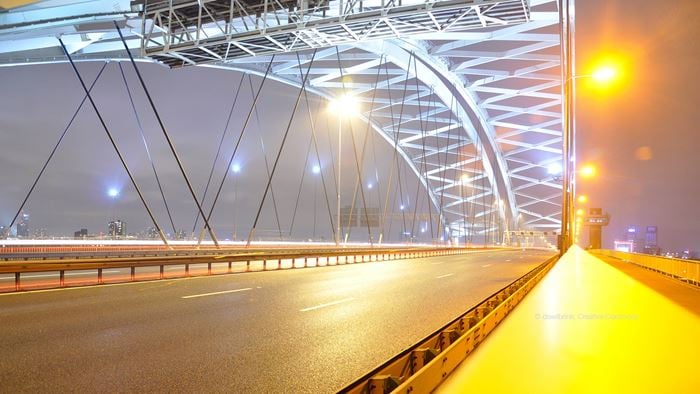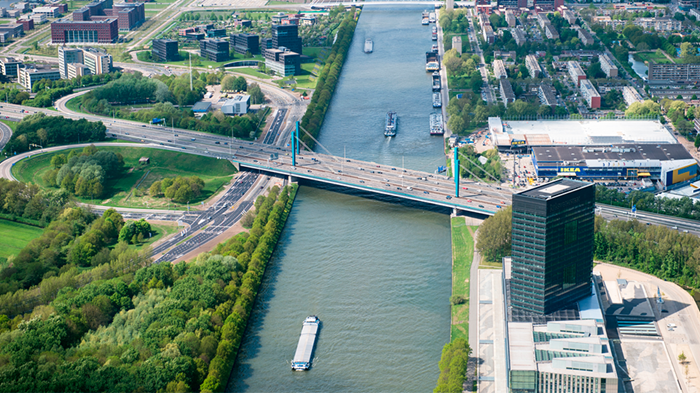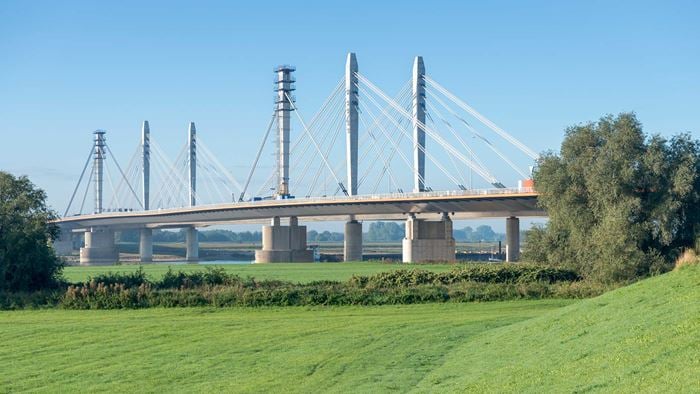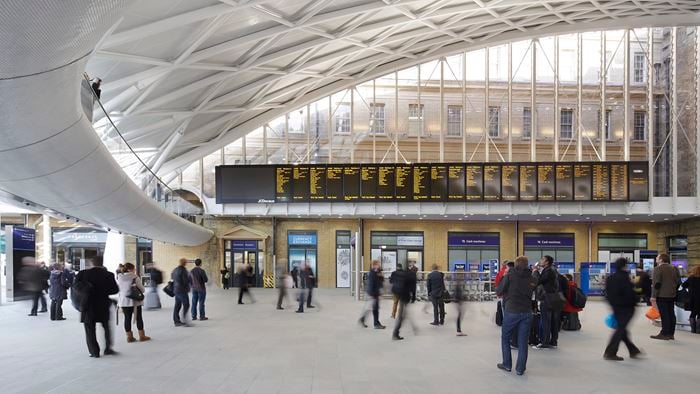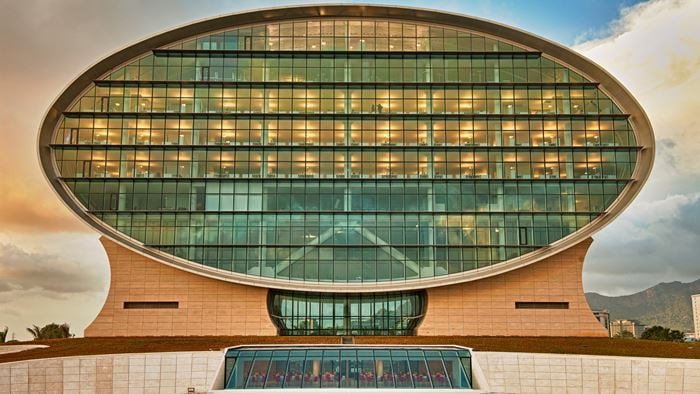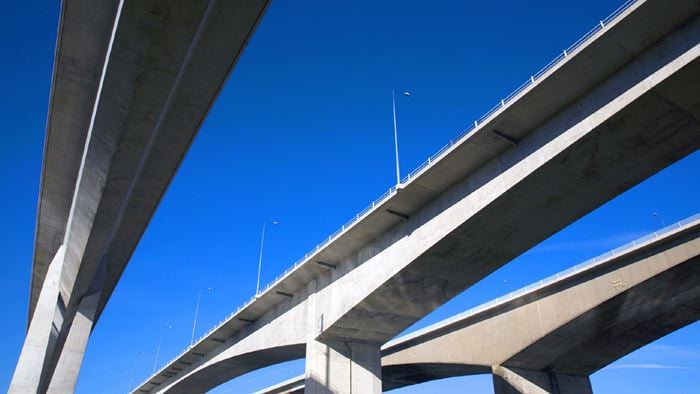Extending the lifespan of ageing infrastructure is a growing challenge across many developed economies, with assets coming under pressure as they reach the end of their service life amid rising traffic volumes. With daily traffic of 230,000 vehicles, Rotterdam’s Van Brienenoordbrug is the busiest bridge in the Netherlands. Renovating this twin-tied arch bridge, which supports 12 lanes of traffic of the country’s busiest highway, was always going to be a challenging operation, but our engineers have gone one step beyond, embracing Circular Economy principles while extending the lifetime of the bridge by another 100 years.
Arup was selected as construction engineer by the country's Directorate-General for Public Works and Water Management, Rijkswaterstaat (RWS), as part of a joint venture with Royal Haskoning DHV.
Due to kick off in 2025, the complex renovation of the 1,320 metres-long twin arched bridge has been carefully designed to minimise impact on traffic. Under the approved plans, the east-bound bridge dating from 1965 will be entirely removed and replaced by the refurbished, 30-year-old western bridge. In the meantime, a newly designed arch bridge will be built offsite and installed to replace the western arch.
Over the past decade, the joint venture has been working with RWS to deliver strengthening design and engineering solutions in a nationwide bridge repair programme: van Brienenoord Bridge is the last, and most complex, of the eight bridges being renovated.
Project Summary
230,000 vehicles daily
100 yearlifespan extension
2 yearrenovation
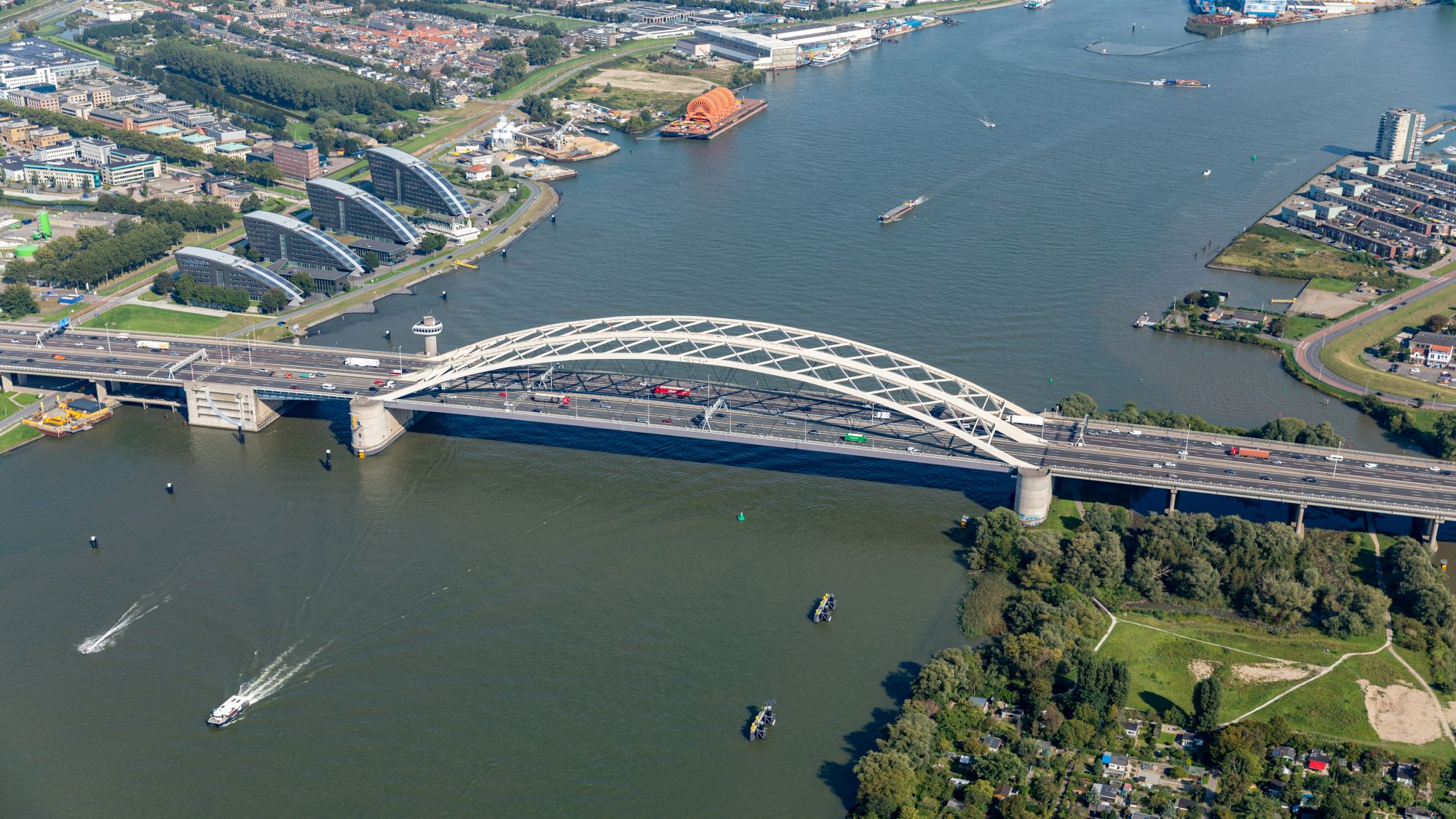
Circular Economy-inspired approach to infrastructure
Maintaining the character of this iconic bridge while minimising the impact on traffic flows were the key design drivers behind this complex bridge renovation. We found this could be done while maximising the re-use of viable materials.
Embracing Circular Economy principles, the refurbishment and re-use of the western arch is one of the earliest examples of a sustainable design approach in the renovation of vital transport infrastructure. The structural integrity of about 3,000 tonnes of steel which make up the western arch will be assessed and reused for the eastern bridge.
“Our creative use of digital tools to assess nearly 3,000 tonnes of steel is a leading example of how designers can adopt a Circular Economy approach to carry out large-scale infrastructure upgrades ” Daan Tjepkema
Arup installed sensors on the bridge to monitor behaviour, comparing it with our theoretical models. Since windloads are difficult to calculate, our team also carried out a windtunnel test to gain greater more insight on real windloading on the bridge.
Minimising traffic disruption
Minimising the impact on traffic flows was the other challenge our specialists faced, with a range of measures helping reduce traffic hindrance from 1.5 years to a mere six-week closure on the busiest bridge in the Netherlands.
After evaluating a range of scenarios, our consultants opted to transport the western arch bridge offsite to carry out the restoration work – all the while minimising closures. Following extensive renovations offsite, the former western arch will be hoisted back onto the existing pillars to replace the eastern arch.
The upgrade works at Van Brienenoordbrug are earmarked to start in the summer of 2025, running up until 2027, during which both bridges need to be accessible for traffic. Works will be mostly scheduled during the summertime to minimise traffic disruption.
Working in partnership with all the stakeholders, replacing the bridge will be carried out with the precision and speed of a military operation.
While the appearance of the bridge will remain the same, its structural integrity will be completely transformed, expanding the bridge’s useful life by another 100 years, well beyond the average lifespan extension of 30 years seen in other Dutch interventions.
Want to know more?
To discover more about our work on the Van Brienenoord bridge, from the work involved in the most sustainable approach available, to the people who made these ideas a reality, visit our immersive web experience.
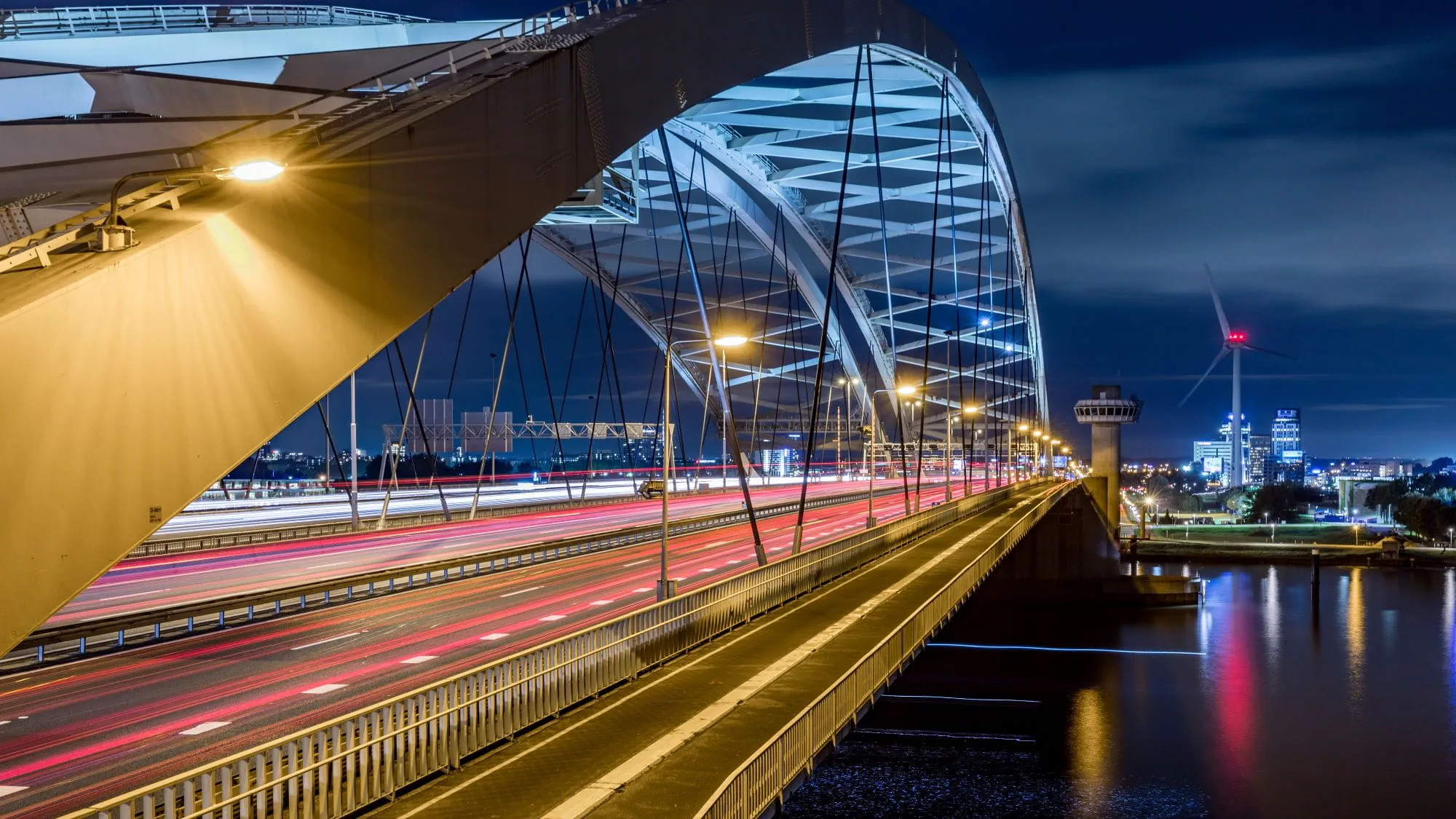 ;
;

